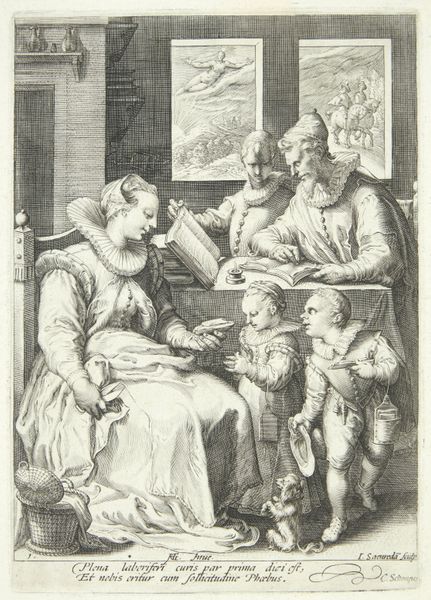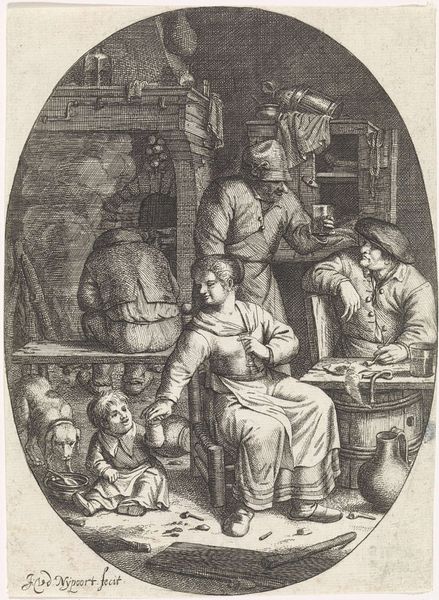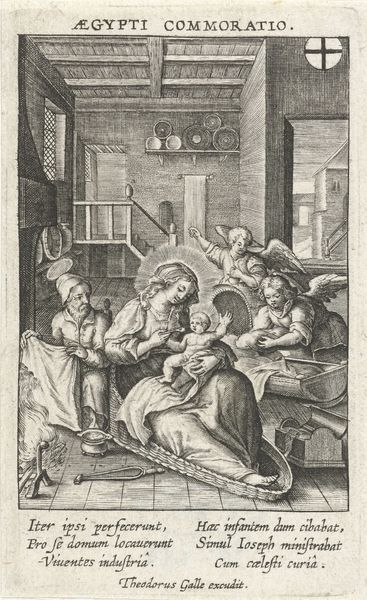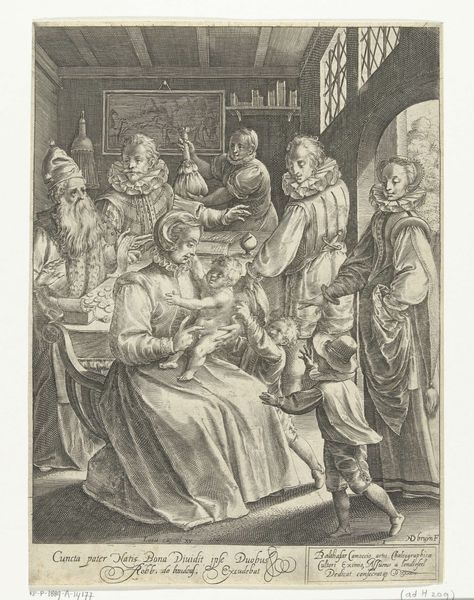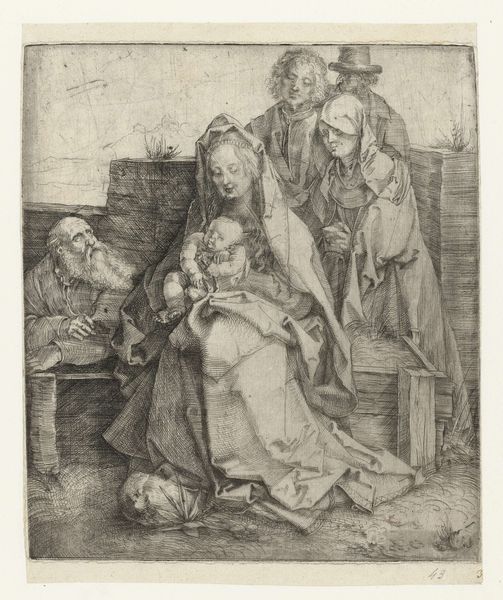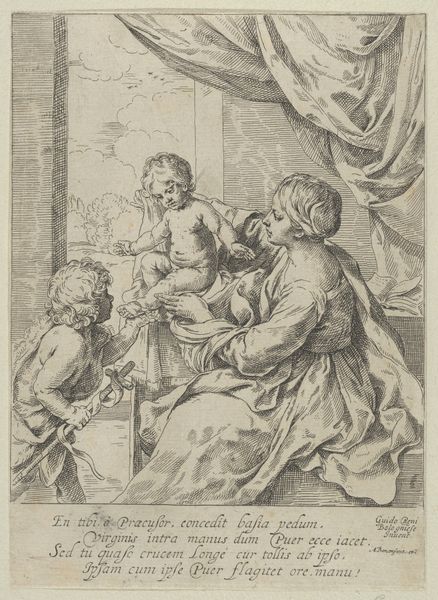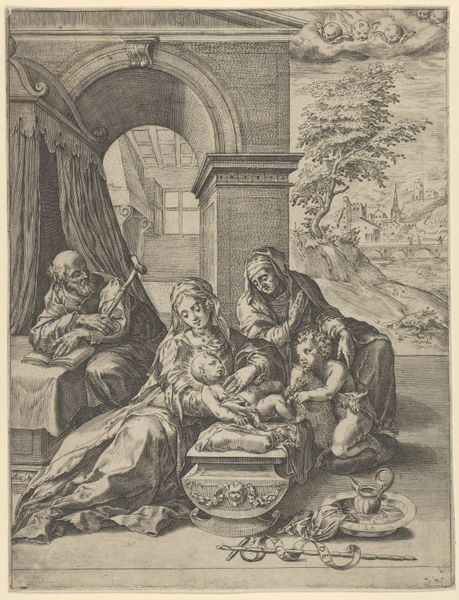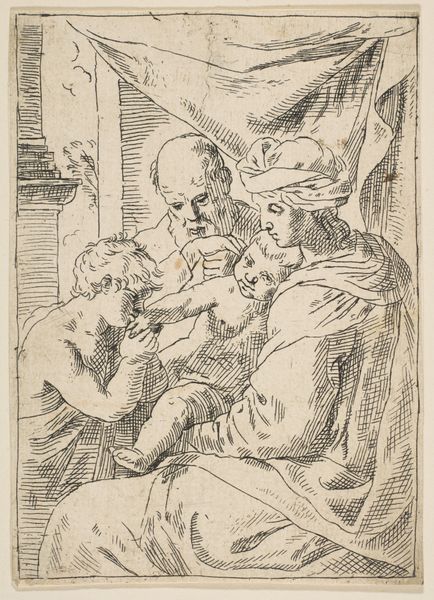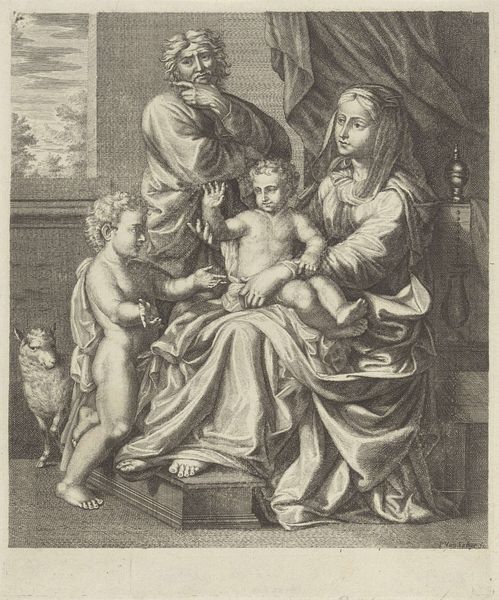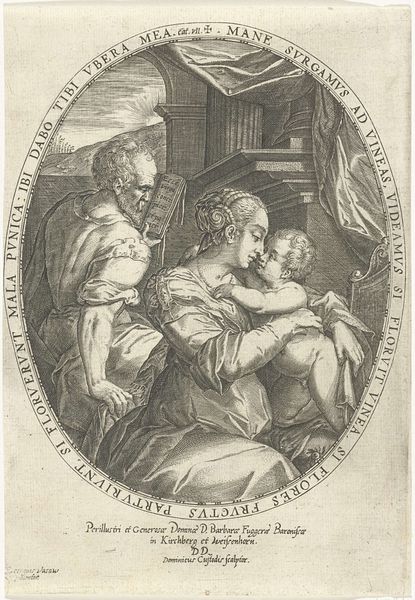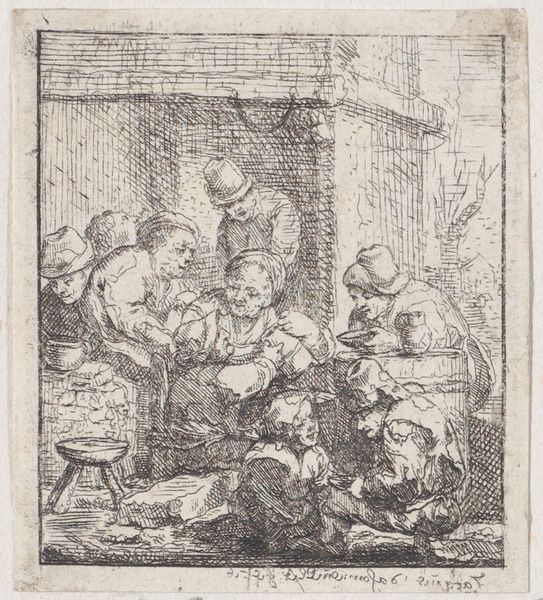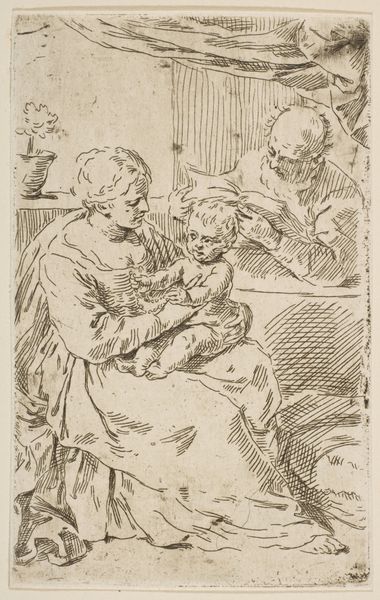
print, etching, engraving
# print
#
etching
#
old engraving style
#
genre-painting
#
northern-renaissance
#
engraving
Dimensions: height 130 mm, width 87 mm
Copyright: Rijks Museum: Open Domain
Curator: Good morning! Let’s discuss Gillis van Breen’s print, "The Morning," made between 1585 and 1610. It’s an etching and engraving held here at the Rijksmuseum. The detail is impressive. The whole scene looks so orderly; everyone's got a book, a purpose. What do you make of it? Editor: Well, immediately I’m drawn to the domestic scene – the woman reading, children gathered around with books. The textures created by the etching are amazing, giving the figures a real sense of weight. The labor involved must have been significant. What does it mean to view this scene through the lens of materiality? Curator: Precisely! The act of creating prints like this one in the Northern Renaissance, involved highly skilled artisans. Each line etched and engraved into the plate represents hours of work. The print medium allowed images and, implicitly, values, to circulate. Editor: So, the materials – the metal plate, the ink, the paper – and the process weren't just neutral, but rather vital elements of its meaning? How accessible would these prints have been? I'm guessing this was still largely in the hands of the elite? Curator: Interesting. They were relatively more accessible than paintings. Consider the rising merchant class during this period. Did such printed materials contribute to the standardization of domestic life and education? Are the neatly dressed figures here subtly selling ideals? Also, consider that while prints made art accessible, this depended on networks of production and distribution centered around skilled craftspeople and trading practices. The economic investment needed makes it interesting to wonder about access and consumption. Editor: That makes me rethink everything. I focused on the "charming domesticity," but you’re highlighting that this print signifies social and economic relationships as much as, if not more than, the lives depicted! Curator: Exactly. It reveals layers about 17th-century cultural values, workshop practice and economics. And each print has its own story based on what labor and process allowed it to reach. Editor: Fascinating. Thank you – I’ll definitely look at art differently now. Curator: My pleasure, and it all goes back to seeing the human skill involved.
Comments
No comments
Be the first to comment and join the conversation on the ultimate creative platform.
